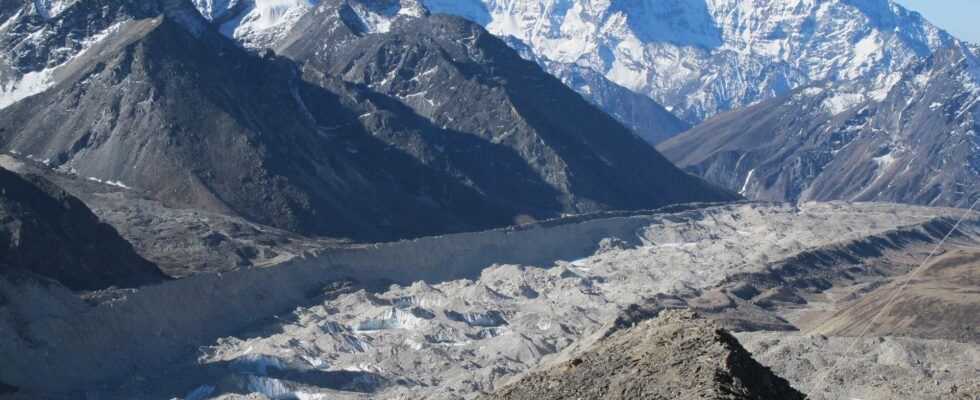In the past few decades, the Himalayan glaciers have lost ice mass ten times faster than the average of all comparable periods since the end of the Little Ice Age 400 to 700 years ago. In addition, the tongues of ice in these mountains melt faster than in other regions of the world. Jonathan Carrivick from the University of Leeds and his team write in Scientific Reports that this loss is extraordinary: the water supply for many people in Asia is threatened.
The working group used various data to reconstruct the extent of the glaciers during the Little Ice Age. At that time the 15,000 or so glaciers covered an area of 28,000 square kilometers. To date it has decreased to 19,600 square kilometers. The loss of ice was between almost 400 and up to 590 cubic kilometers and thus more volume than can still be found today in the Alps, the Caucasus and Scandinavia.
However, the glaciers did not melt constantly: there were repeated phases in which they retreated more strongly or even grew slightly again. In the past few decades, however, they have only known one direction: They shrink and shift their tongues mostly uphill. However, there are regional differences: In the east of the Himalayas, for example in Nepal or Bhutan, they are disappearing faster and more strongly than in the western part of India and Pakistan. In the Karakoram, they sometimes even grow, which has to do with different weather influences and orographic conditions, for example the height of the individual mountain ranges and their orientation.
Whether the glaciers end in a lake or on land also has an impact on the rate at which ice is lost. The former also strengthens the melt, which leads to feedback effects. The number of lakes and their size increases due to the increased melt, which in turn drives the loss of ice. A thick layer of rubble on the tongue of ice is also a driver: This does not insulate, but rather acts like a heating coil. Only 7.5 percent of glaciers fall into this category, but they account for almost half of the ice retreats in recent decades.
